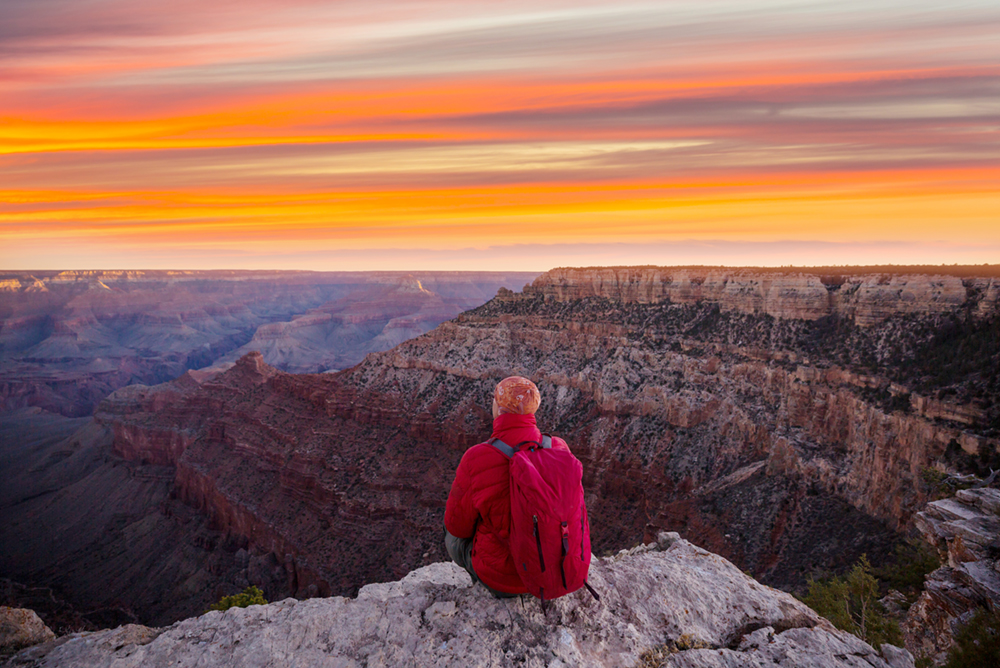The Grand Canyon, with its dramatic landscapes and stunning geological formations, offers some of the most spectacular hiking trails in the United States. Exploring these trails allows you to immerse yourself in the canyon’s natural wonders, uncover its rich history, and witness its diverse flora and fauna up close. In this guide, we’ll introduce you to the top hiking trails in the Grand Canyon, suitable for a variety of skill levels and interests.
I. Bright Angel Trail
The Bright Angel Trail is one of the Grand Canyon’s most popular and iconic trails. Starting at the South Rim, this 9.5-mile (one-way) trail descends into the heart of the canyon, offering breathtaking views, shade, and water sources along the way. Hikers can choose from several turnaround points, such as the 1.5-mile or 3-mile rest houses, or for a more challenging hike, venture all the way to the Colorado River or Phantom Ranch for an overnight stay.

II. South Kaibab Trail
The South Kaibab Trail is another classic hike in the Grand Canyon that offers stunning panoramic views. This 7-mile (one-way) trail is steeper than the Bright Angel Trail and has no water sources along the route, but its unmatched vistas make it a favorite among hikers. Popular turnaround points include Ooh Aah Point (1.8 miles round trip), Cedar Ridge (3 miles round trip), and Skeleton Point (6 miles round trip), where hikers are rewarded with their first glimpse of the Colorado River.
III. North Kaibab Trail
The North Kaibab Trail is the least visited of the three corridor trails, providing a more remote and tranquil hiking experience. This challenging 14-mile (one-way) trail takes you from the North Rim down to the Colorado River, traversing diverse ecosystems and offering stunning views. Hikers can opt for shorter day hikes to destinations such as Roaring Springs (9.4 miles round trip) or Ribbon Falls (16.8 miles round trip), or embark on a multi-day rim-to-rim hike by connecting with the Bright Angel or South Kaibab trails.
IV. Rim Trail
The Rim Trail is a gentle, mostly paved trail that stretches 13 miles along the South Rim, offering easy access to a variety of viewpoints and attractions. This relatively flat trail is perfect for families and those seeking a more leisurely hike. Hikers can walk the entire trail or choose shorter segments, taking advantage of the free shuttle bus to return to their starting point or explore other areas of the South Rim.
V. Hermit Trail
The Hermit Trail, located in the South Rim’s more remote Hermit’s Rest area, is a rugged and challenging hike that offers solitude and spectacular views. This 8.9-mile (one-way) trail is less maintained than the corridor trails and requires hikers to be well-prepared with water, food, and navigation skills. For a day hike, consider turning around at Santa Maria Spring (5 miles round trip) or Dripping Springs (7 miles round trip).

VI. Havasu Falls Trail
The Havasu Falls Trail leads to one of the Grand Canyon’s most famous destinations, the turquoise waterfalls of Havasu Canyon. This 10-mile (one-way) trail starts outside the national park on the Havasupai Indian Reservation and descends into the canyon, culminating at the enchanting Havasu Falls. A permit is required, and reservations fill up quickly, so plan well in advance for this once-in-a-lifetime hike.
The Grand Canyon’s diverse hiking trails offer unforgettable experiences for hikers of all skill levels. Whether you’re seeking a leisurely walk along the Rim Trail, an exhilarating descent on the iconic Bright Angel Trail, or the enchanting beauty of Havasu Falls, the Grand Canyon’s trails promise an unparalleled opportunity to discover nature’s wonders up close. As you plan your hiking adventure, be sure to consider your skill level, prepare adequately with water, food, and proper gear, and always practice Leave No Trace principles to help preserve this incredible natural treasure for generations to come. Happy trails!
